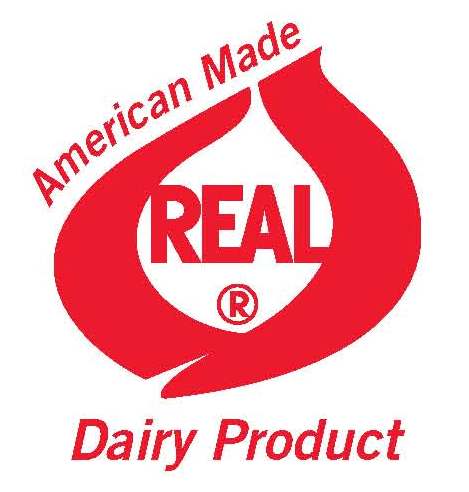The REAL® Deal
December 1, 2012
Albert Einstein famously said that the same thinking that got you into a problem in the first place can’t be used to get you out of it. That’s why we at NMPF are using some new ideas about how to protect and promote U.S. dairy products in the 21st century, through the revitalization of the venerable REAL® Seal. The dairy marketing landscape has changed in recent decades, giving us both new problems – and new opportunities.
Those with a history in the dairy business will recall that the REAL® Seal was first deployed more than 30 years ago to combat the rising threat of imitation cheeses, which began to appear with alarming frequency on frozen pizzas. Dairy farmers fought this trend of faux cheese by developing a simple logo that manufacturers and marketers of real cheese could use to signify the authenticity of their products.
As the threat from fake cheeses faded, the rationale for aggressively promoting the Seal likewise receded. But in the past decade, we’ve seen the appearance of new competitive threats, from an assortment of dairy analogues that are every bit as concerning as the vegetable-oil based cheeses of the disco era. Hemp “milk,” soy “cheese,” rice “yogurt”…the list of imitators continues to expand. And as we think about how to challenge the rise of these competitors, we need new thinking, in the form of an old weapon with new capabilities: the REAL® Seal.
Back in March, NMPF assumed management of the REAL® Seal program from the United Dairy Industry Association. This agreement gives NMPF the responsibility to review how, and by whom, the Seal is used, using some the same parameters of the past – but not all. As discussed at last month’s NMPF annual meeting in Orlando, the REAL® Seal allows us to play offense, by helping consumers distinguish between products made from real milk, and those that are either imported, or not made from cow’s milk at all.
Research conducted by Dairy Management Inc. has found that the Seal has 91% consumer awareness – meaning nine out of ten people recognize it — and 78% of consumers are familiar enough with it to know what it stands for. What’s more, 360 food companies are registered to use the REAL® Seal on more than 10,000 products.
 That’s a reflection of where things stand today. But by allowing the words “American made” to accompany the existing logo, we can help both private label and branded manufacturers, active in both domestic and international markets, distinguish their products from competitors from foreign nations. And by adding the words “made with real dairy ingredients” or “made with real butter” (or cheese), we can help food processors promote their use of dairy ingredients from real cows’ milk, and encourage the use of such ingredients over imitators. These additional label claims also will draw attention to the superior nutrient content of dairy foods, which in most cases offer a better nutritional profile than plant-based imitators.
That’s a reflection of where things stand today. But by allowing the words “American made” to accompany the existing logo, we can help both private label and branded manufacturers, active in both domestic and international markets, distinguish their products from competitors from foreign nations. And by adding the words “made with real dairy ingredients” or “made with real butter” (or cheese), we can help food processors promote their use of dairy ingredients from real cows’ milk, and encourage the use of such ingredients over imitators. These additional label claims also will draw attention to the superior nutrient content of dairy foods, which in most cases offer a better nutritional profile than plant-based imitators.
Unfortunately, the apparent thinking these days at the Food and Drug Administration is that imitation dairy products using standard dairy names are not a concern worth countering. So if the FDA won’t preserve the integrity of dairy products and how they’re labeled, we need to use other tools at our disposal to help customers and consumers get the facts about real dairy products.
We’ve seen an explosion of label qualifiers in the past decade, from the rise of certified organic, to absence claims of dubious significance. There’s a desire for transparency and authenticity in food sourcing that processors and manufacturers are seeking to address. The bottom line is that we know at least some consumers today are asking where products are from, who makes them, and what’s inside them. The REAL® Seal was created more than three decades ago to answer those questions, and even though the questions (and the thinking behind them) have changed somewhat, the answers that real dairy foods offer are still the same.






